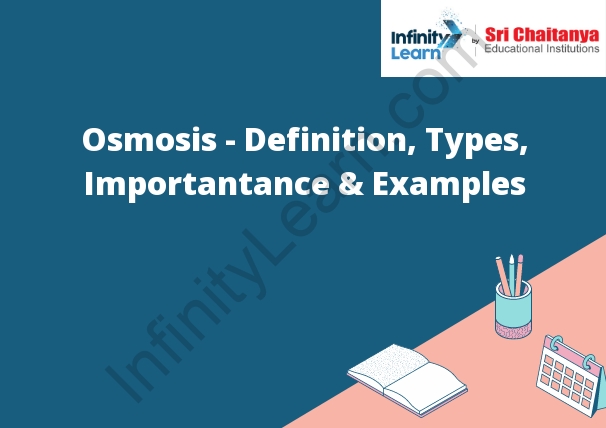Table of Contents
What is Osmosis? and Types of Osmosis:
Osmosis is the spontaneous net movement of solvent molecules through a semipermeable membrane from a region of high concentration to a region of low concentration until the concentrations on both sides are equal. This process is driven by the concentration gradient, the difference in concentration between the two sides of the membrane.
There are two types of osmosis:
- Passive osmosis
- Active osmosis
Passive osmosis is the diffusion of water molecules through a semipermeable membrane from a region of high concentration to a low concentration. This process is driven by the concentration gradient and does not require any energy.
Active osmosis is the diffusion of water molecules through a semipermeable membrane from a region of high concentration to a low concentration. Still, this process is driven by the energy of the water molecules.

Osmotic Pressure
The osmotic pressure is the pressure exerted by a solution on a semipermeable membrane to prevent the passage of solvent molecules through the membrane. The osmotic pressure is a function of the concentration of the solute particles in the solution and the surface area of the membrane.
What is a Semipermeable Membrane?
A semipermeable membrane is a thin film that allows some molecules to pass through while blocking others. It is made of a porous material that allows small molecules to move while larger molecules are blocked. This type of membrane is often used in filters and separators.
Endosmosis
Endosmosis is the process by which a solvent moves through a semipermeable membrane into a more concentrated solution. This process is driven by the concentration gradient, which is the difference in concentration between the two solutions. The solvent will move from the less concentrated to the more concentrated solution until the concentration gradient is equal on both sides of the membrane.
Exosmosis
is the diffusion of water molecules from a higher concentration to a lower concentration through a semipermeable membrane.
In exosmosis, water molecules move from an area of high concentration (usually the inside of a cell) to an area of low concentration (usually the outside) through a semipermeable membrane. The water molecules move from an area of high concentration because they are trying to achieve equilibrium or balance. The water molecules move from the inside of the cell to the outside of the cell because the concentration of water molecules is higher on the inside than on the outside of the cell.
Reverse Osmosis
Reverse osmosis is a water purification technology that uses a semipermeable membrane to remove ions, molecules, and other particles from water. In reverse osmosis, water molecules pass through the membrane while salt and other impurities are left behind.
Forward Osmosis:
Forward osmosis is a water purification process that uses a semipermeable membrane to remove contaminants from water. The water is forced through the membrane by applying pressure, leaving the contaminants on the other side. This process is used to purify water for drinking, irrigation, and industrial applications.
Osmotic Concentration
Osmotic concentration is the measure of the number of particles in a solution. The higher the osmotic concentration, the greater the number of particles in a solution.
Isotonic Solution
An isotonic solution is a solution that is in equilibrium with the cells of the body. This means that the concentration of solutes in the solution is the same as the concentration of solutes in the cells. An isotonic solution is important because it helps to maintain the balance of fluids in the body. It also helps to transport nutrients and oxygen to the cells.
Hypotonic Solution
A hypotonic solution is a solution that has a lower osmotic pressure than another solution. This means that the hypotonic solution will allow more water to flow into the cells of the other solution.
Hypertonic Solution
A hypertonic solution has a higher concentration of solutes than another solution. When a hypertonic solution is in contact with a cell, the water inside the cell diffuses out of the cell to equalize the concentration of solutes on both sides of the cell membrane. This can cause the cell to shrink in size.
Osmosis in a Plant Cell
Water molecules move across a plant cell’s plasma membrane by osmosis. The cell’s cytoplasm has a higher concentration of water molecules than the solution outside the cell. This imbalance creates a force called osmotic pressure, which pushes the water molecules into the cell.
The Importance of Osmosis:
The osmosis process is important because it helps cells maintain a balance of water and other molecules. Osmosis occurs when water molecules move between cells and the surrounding environment. This process helps to regulate the amount of water in cells and can also help to remove waste products from cells.
The Significance of Osmosis:
Osmosis is a process that occurs when a solvent, such as water diffuses across a semipermeable membrane into a solution of higher solute concentration. The solvent moves from an area of low solute concentration to a place of high solute concentration to equalize the concentrations on both sides of the membrane. This process occurs until equilibrium is reached, and the concentrations on both sides of the membrane are the same.
What is Diffusion?
Diffusion is the process of spreading or passing through a medium or space. Diffusion can refer to the movement of particles, molecules, or genes.







